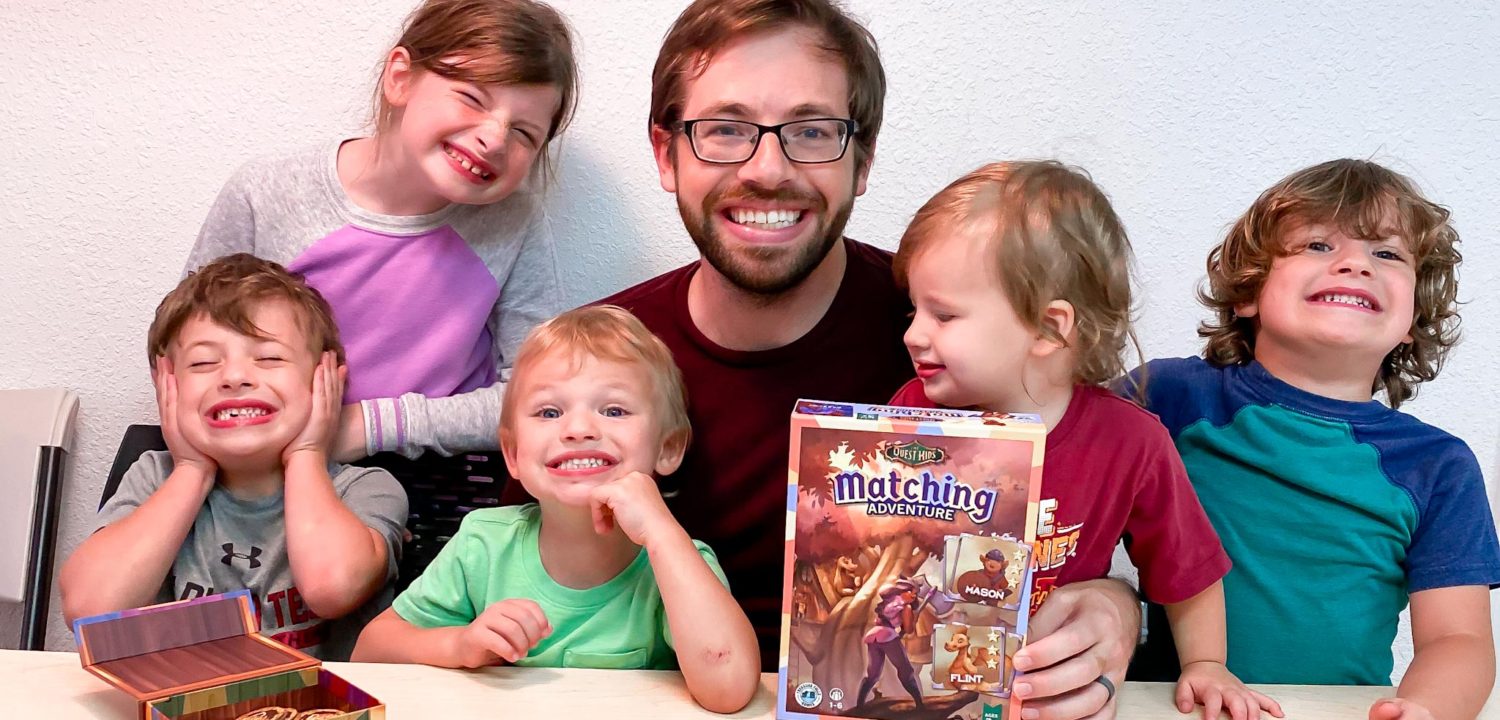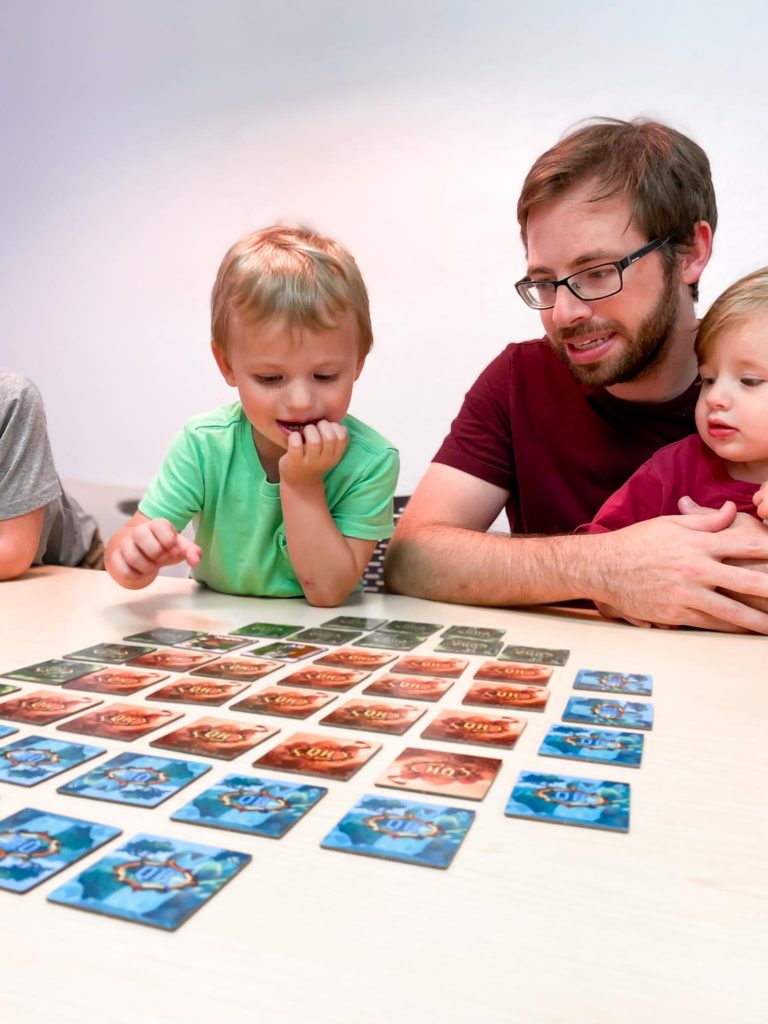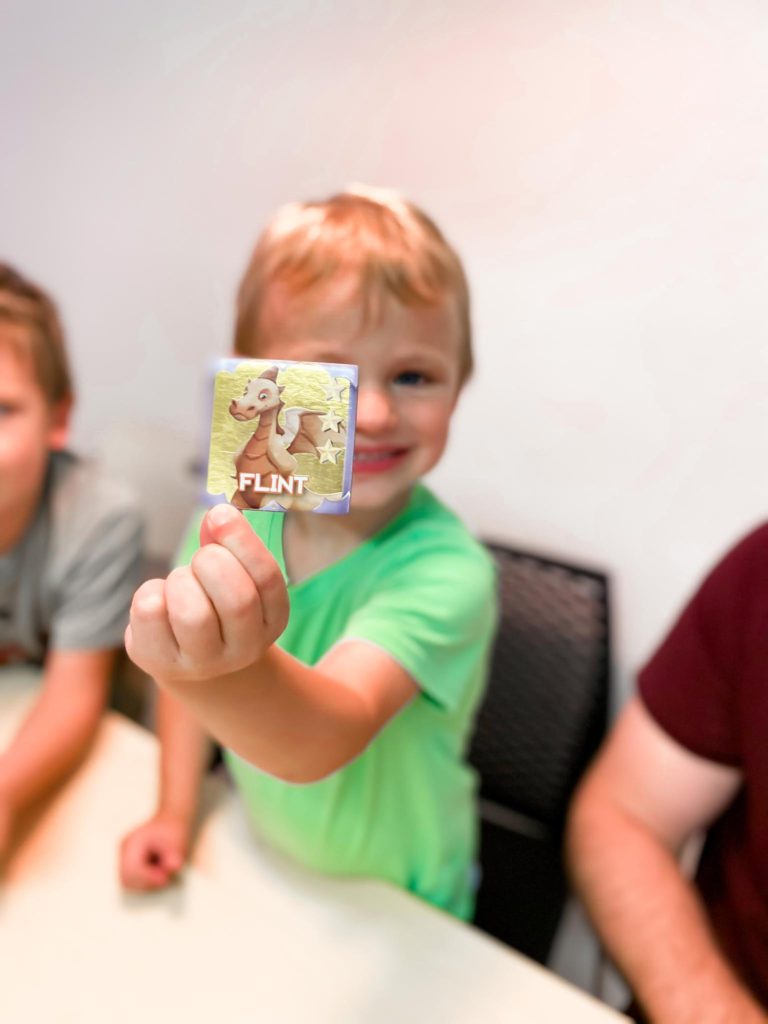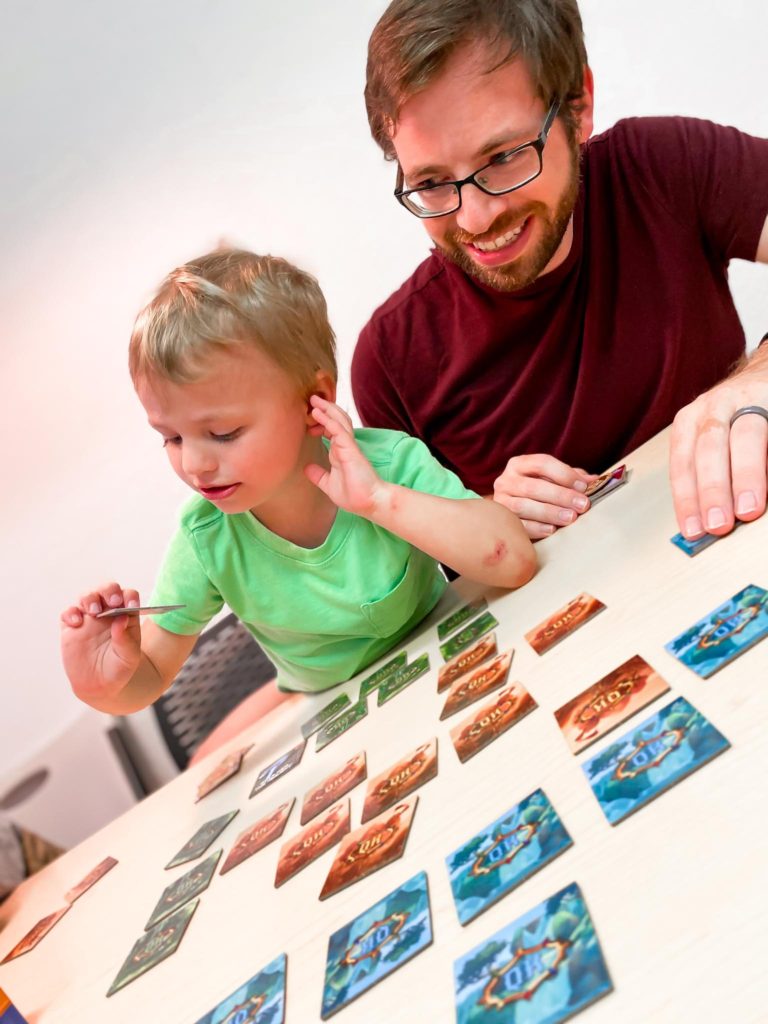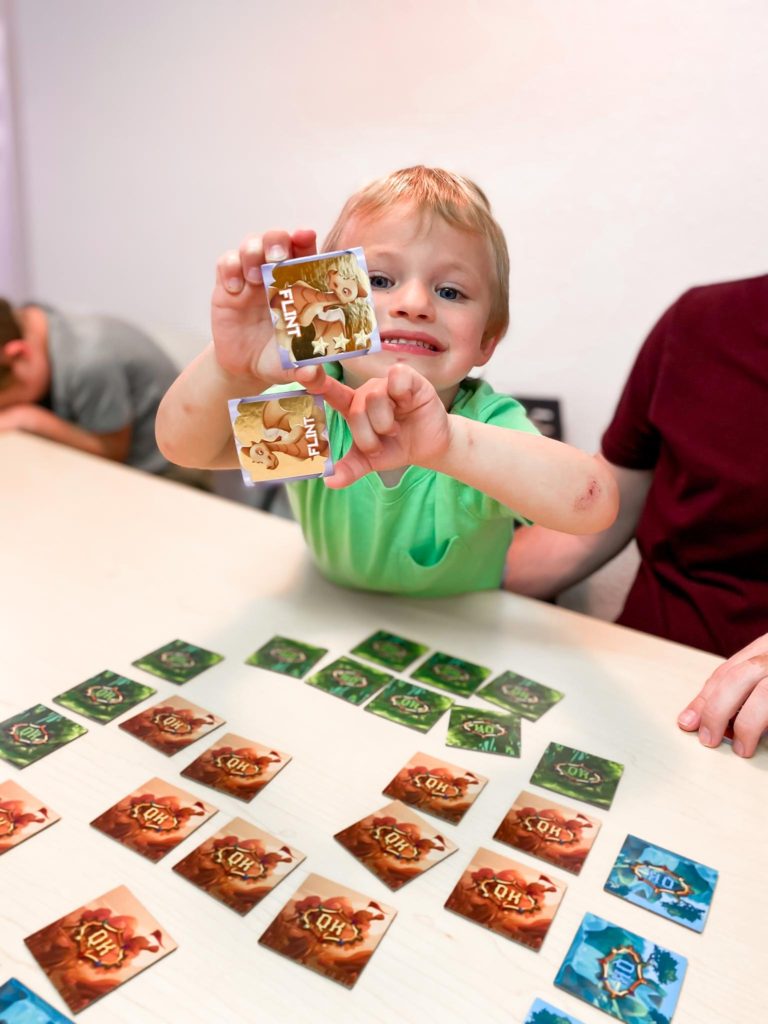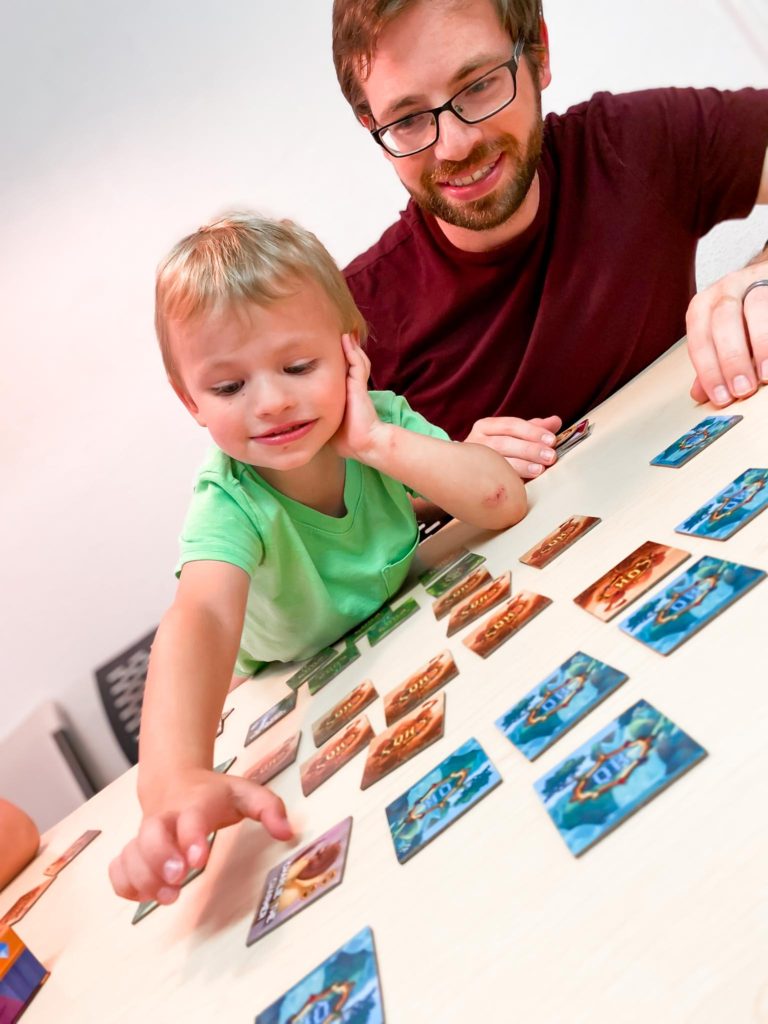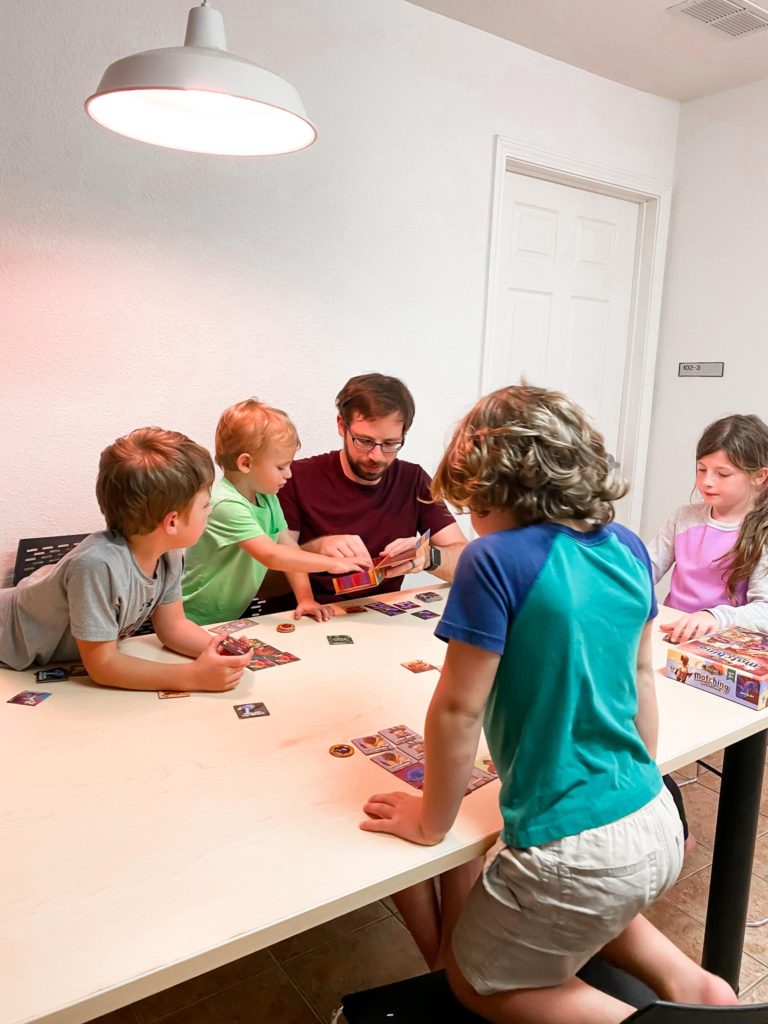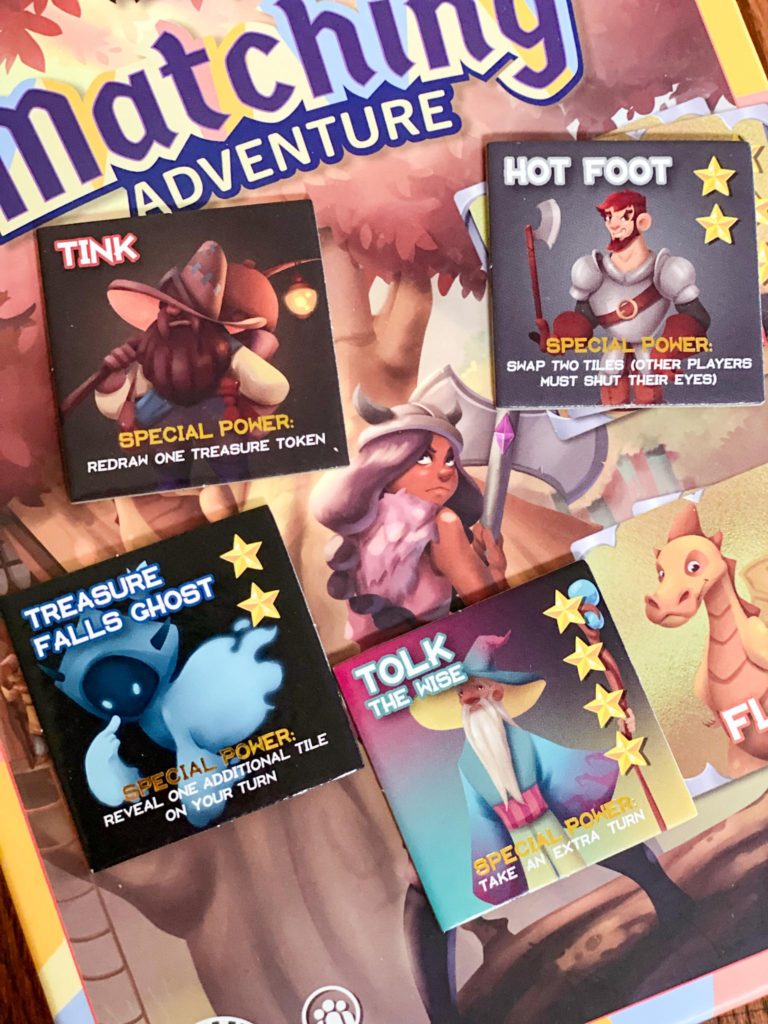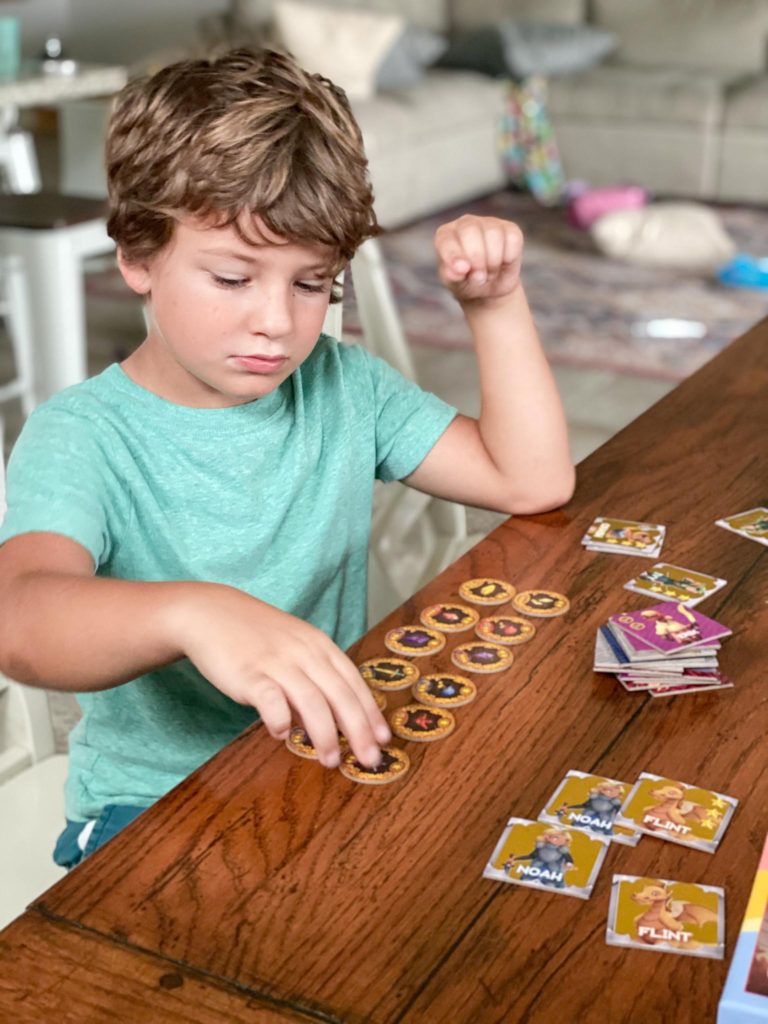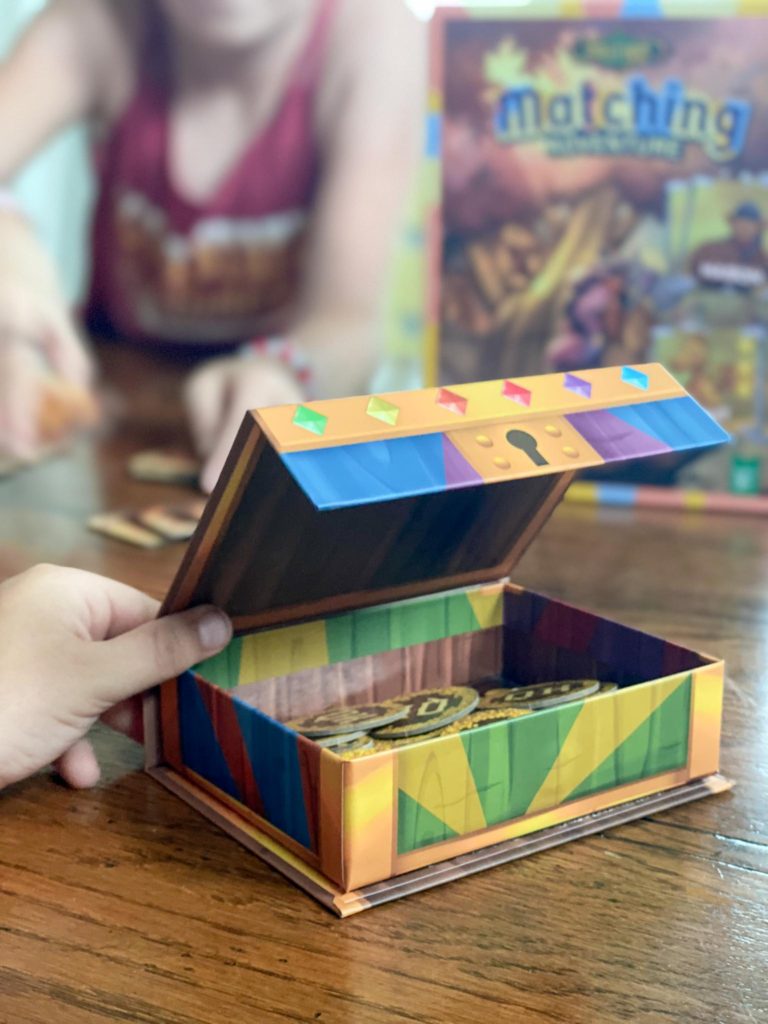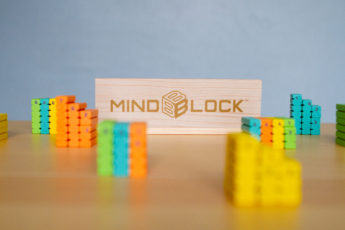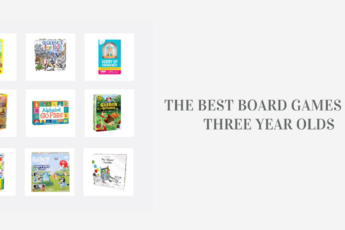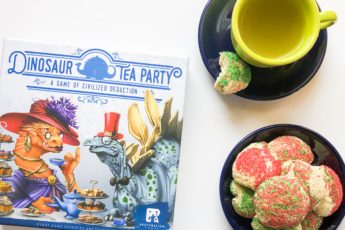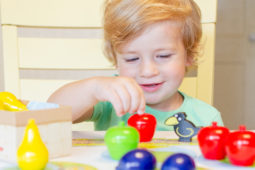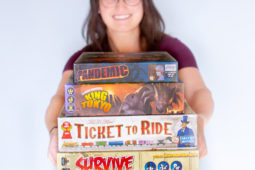We’re taking a look at Quest Kids: Matching Adventure! An exciting matching game for preschoolers!
One of the earliest and accessible types of games you can play with your young kids is a classic tile-matching game. These matching games make for great introductory games since the rules are simple, the gameplay is hands-on, and turns are quick. Most importantly, matching games are fun ways to help develop young gamers’ memory skills. There are several memory games made for kids. We even shared three of our favorite unique memory games in this article.
As publishers make new memory games, they often raise the complexity of the rules/gameplay, making the game no longer suitable for young gamers. Now Treehouse Falls Games has published Quest Kids: Matching Adventure, adding new twists to the classic memory matching game without raising the complexity level. Quest Kids: Matching Adventure is a fantastic hybrid memory game; playable for young kids while remaining engaging for older players.
How Do You Play Quest Kids Matching Adventure?
The theme of Quest Kids: Matching Adventures is a classic fantasy setting with characters featuring knights, warriors, and wizards. The game also features classic fantasy bad guys like dragons and trolls, plus some not traditional ones like pirates, snakes, and bears. The setting is vital in this matching game because players don’t win by finding the most matches but by gaining the most stars. You earn stars by matching heroes, allies and collecting treasure while on adventures.
There are two different tile sets where players can make matches, Treehouse and Adventure tiles. There are 20 treehouse tiles, and you will play with all of these tiles every game. The rules for the Treehouse tiles are like classic memory match; flip only two tiles and collect them if they match. The Treehouse tiles are a mix of six hero sets and four allies sets. Heroes and Allies tiles are worth stars at the end of the game. Players must find a matching pair of hero tiles before looking for matches in the adventure tiles. The ally tiles are neat because they provide the player who finds a pair with stars plus a unique one-time ability. The player must share the other ally tile with another player who will also use the same one-time power but will not earn any stars.
Customize the game to suit your players!
The game comes with 40 adventure tiles or four pairs for the five bad guys. You can customize the game’s length by limiting the number of bad guy pairings, which is a feature we love. When setting up the play area, arrange the green adventure tiles on one side of the treehouse tiles and place the blue tiles on the opposite side.
When going on an adventure, players get to flip over three tiles instead of two, keeping any matches. The player who finds a match gains 1-2 treasures from the chest as printed on the matching tiles. Treasures can range in value from 1-4 stars if your hero’s color matches the treasure tile you drew from the treasure chest.
The game ends when there are no more adventure tiles to match.
The player with the most stars (not matches!) wins the game.
What Do We Think?
The art, theme, and setting are all top-notch. The art is beautiful and makes you wonder about the backstory of our heroes. I love the magnetic treasure chest to store the treasure tokens. It is both an excellent thematic touch and also a fantastic storage option.
I love the scoring system in the game is not just who got the most matches, but who got the most stars. This keeps the game interesting until the end, especially for younger players.
The one-time abilities on the allies’ tiles are fun to use. Getting to break the rules, taking an extra turn, and flipping extra tiles or treasure tokens provides the chance for strategic game play. Kids can learn how to maximize turns and special abilities.
Ally tiles also work as a catch-up opportunity since the player has to share one of the tiles with another player. In our games, the second ally tile was commonly shared with the player perceived in last place.
My favorite thing about Quest Kids: Matching Adventure is that it remains accessible for the young gamers while still entertaining older children. It is rare to find a board game design for ages 3+ that feels like a board game. Our kids also noticed the difference because our three-year-old felt like he was finally getting to play a big kid game.
Summary
If you are thinking about getting an introductory memory matching game for kids 3+, I highly recommend choosing Quest Kids: Matching Adventure. Quest Kids balances accessible classic game play with interesting modern mechanics. It provides a more dynamic play experience with greater staying power than the classic flip and match memory game.
The ideal age range for this game is 3-6 years old and gets my highest recommendation for anyone looking for a modern take on the classic matching game.
Game Info:
Title: The Quest Kids: Matching Adventure
1-6 Players | Ages 3+
Designer: Dustin McMillian
Artist: Apolline Etienne
Publisher: Treasure Falls Games
If you liked this post you may also like:
10 Things We Look for in Kids Games
Inspector Mouse: The Great Escape Review


